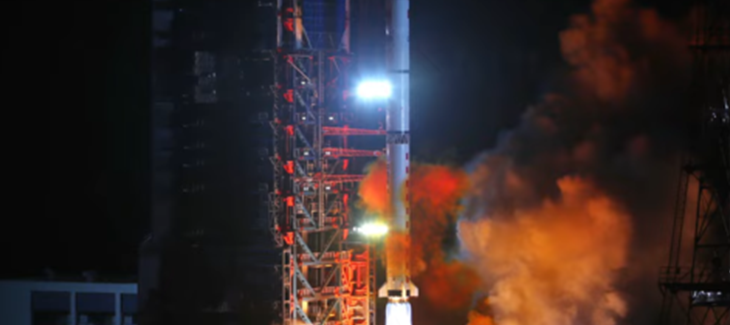The Yaogan satellites, China’s largest fleet of remote sensing satellites, are designed to enhance the country’s remote sensing capabilities further. They are also radar reconnaissance satellites. As a kind of remote sensing satellites, Yaogan satellites are used for a variety of purposes, such as agricultural production performance evaluation, disaster relief, natural disaster prevention, marine and land resource research, electromagnetic environment detection, relevant technical tests, and survey and measurement of various objects on land and at sea.
The Yaogan Jianbing-8 naval satellites (JB-8) comprise a leading satellite and two secondary satellites launched in a triplet. They were probably used for ocean or naval forces similar to the US NOSS system, although they officially carry out electromagnetic environmental monitoring. These satellites can fly in a dispersed pattern to identify radio sources. They are built on the CAST2000 platform, weigh 200 kg, and have an orbital period of 107.10 minutes.
Credit: Wikipedia (public source)
In addition, the launch of the Yaogan satellites serves the purpose of further space exploration and demonstrating China’s progress in remote sensing. The data from these satellites are used by various organizations such as governments, economic sectors, and enterprises throughout China.
China will launch the Yaogan satellites on September 7, 2022, together with the launch of the Yaogan-35 group. Another group of Yaogan satellites, Yaogan-36, was launched on 26 July 2023, followed by the launch of the group Yaogan-39 (01) on 31 August 2023. Yaogan-39 (02) was found on September 6, 2023, and Yaogan-40 on September 10, 2023. All of these launches were carried out using Long March launch vehicles, with the recent Yaogan 33D launch being the 488th mission of the Long March series of rockets. The Yaogan-39 camera allows you to take high-resolution pictures from anywhere worldwide. The Long March 2D rocket blasted off into the night sky over the Xichang Satellite Launch Center in southwest China at 4:03 p.m. ET on Oct. 23 (2003 GMT; 4:03 a.m. Beijing time on Oct. 24).
The Long March 2D rocket successfully launched from China’s Xiechang Satellite Launch Center at 4:03 pm ET on October 23, carrying a new set of Yaogan 39 series satellites and other previously unannounced payloads into orbit. The launch was confirmed by China Aerospace Science and Technology Corporation (CASC).
This launch was the 488th mission of the Long March rocket series and a significant advance in China’s remote sensing capabilities. The launches reflect China’s progress in space exploration and demonstrate the capabilities of the Long March series.
Banner image: Launch of Yaogan-36 on 27 November 2022. Credit: Wikipedia (public source)
Image credit:
https://en.wikipedia.org

